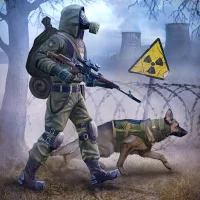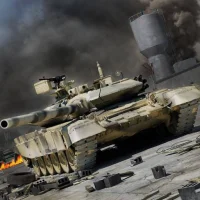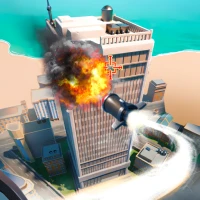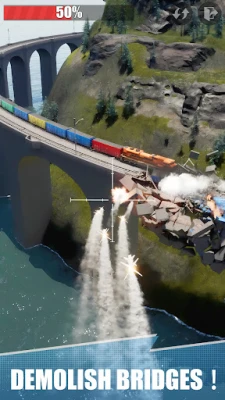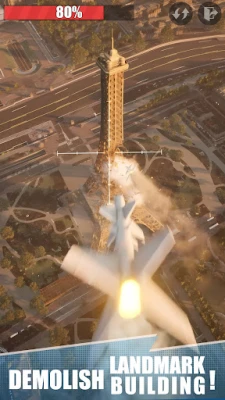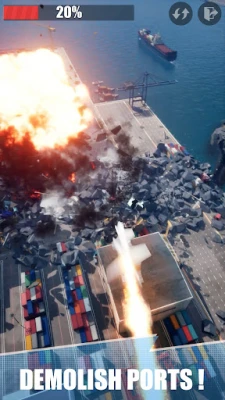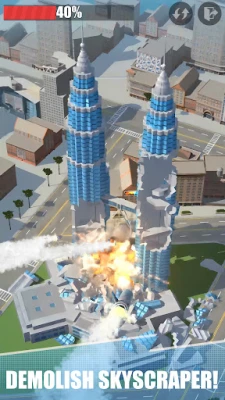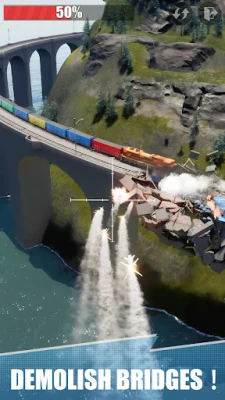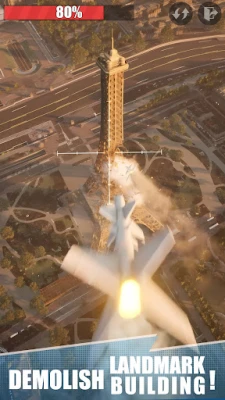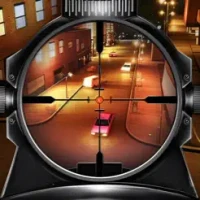
Latest Version
July 17, 2025
MeYee Studio
Games
Android
0
Free
com.meyee.sg
Report a Problem
More About Skystrike
Mastering Three-Dimensional Tactical Warfare: A New Era of Combat Strategy
In the rapidly evolving landscape of modern warfare, the ability to command advanced military assets is paramount. Three-dimensional tactical warfare has emerged as a critical component of military strategy, enabling commanders to utilize stealth fighters, hypersonic bombers, and AI-driven drone swarms effectively. This article delves into the intricacies of this innovative approach, highlighting how to leverage terrain, weather, and electronic warfare to gain a decisive advantage over adversaries.
Understanding the Dynamics of Modern Battlefields
Today's battlefields are not confined to traditional ground combat. Instead, they encompass a three-dimensional space where air, land, and sea operations converge. Commanders must adapt to this complexity by employing a multifaceted strategy that incorporates various elements:
- Stealth Fighters: These aircraft are designed to evade radar detection, allowing for surprise attacks and strategic reconnaissance.
- Hypersonic Bombers: Capable of traveling at speeds exceeding Mach 5, these bombers can strike targets with unprecedented speed and precision.
- AI Drone Swarms: Utilizing artificial intelligence, these drones can operate autonomously or in coordination with human operators, overwhelming enemy defenses through sheer numbers.
Leveraging Terrain and Weather for Tactical Advantage
Successful military operations require a deep understanding of the battlefield environment. Commanders must analyze terrain features and weather conditions to optimize their strategies:
- Terrain Utilization: High ground, natural cover, and urban landscapes can be exploited to enhance defensive positions and ambush opportunities.
- Weather Considerations: Adverse weather conditions can impact visibility and aircraft performance. Commanders must adapt their tactics accordingly, using storms or fog as cover for maneuvers.
Electronic Warfare: Disrupting Enemy Operations
In the digital age, electronic warfare has become a vital component of military strategy. By disrupting enemy communications and radar systems, commanders can create openings for their forces:
- Jamming Communications: By employing electronic jamming techniques, forces can hinder enemy coordination and response times.
- Cyber Operations: Targeting enemy networks can cripple their operational capabilities, providing a significant edge in combat.
Architectural Annihilation: The Art of Destruction
Modern warfare is not just about defeating enemy forces; it also involves the strategic destruction of infrastructure. Architectural annihilation showcases the power of physics-driven destruction:
- Skyscraper Demolition: Advanced munitions can bring down towering structures, creating cascading glass avalanches that serve both tactical and psychological purposes.
- Underground Bunker Bombardment: Precision strikes can target fortified positions, causing them to implode under calculated bombardment, effectively neutralizing threats.
The Sky as Your Chessboard: Strategic Mastery
In this new era of warfare, the sky becomes a chessboard where every move counts. Commanders must think several steps ahead, anticipating enemy actions while executing their strategies:
- Engines Hot: With aircraft ready for deployment, commanders must ensure that their forces are prepared for rapid engagement.
- Targets Locked: Precision targeting is essential for minimizing collateral damage while maximizing operational effectiveness.
- Painting the Clouds with Fire: The culmination of strategy and execution results in a display of aerial dominance, where the skies are filled with the firepower of advanced military technology.
Conclusion: Embracing the Future of Warfare
As we move further into the 21st century, the landscape of warfare continues to evolve. Three-dimensional tactical warfare represents a paradigm shift in how military operations are conducted. By mastering the use of advanced technologies, understanding the battlefield environment, and employing innovative strategies, commanders can secure victory in an increasingly complex and dynamic world. The future of combat lies in the hands of those who can adapt, innovate, and execute with precision.
Rate the App
User Reviews
Popular Apps








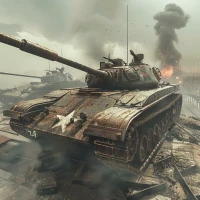

Editor's Choice



